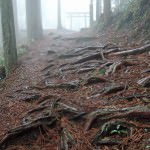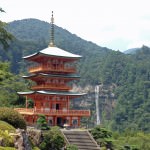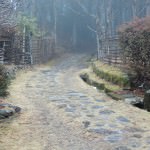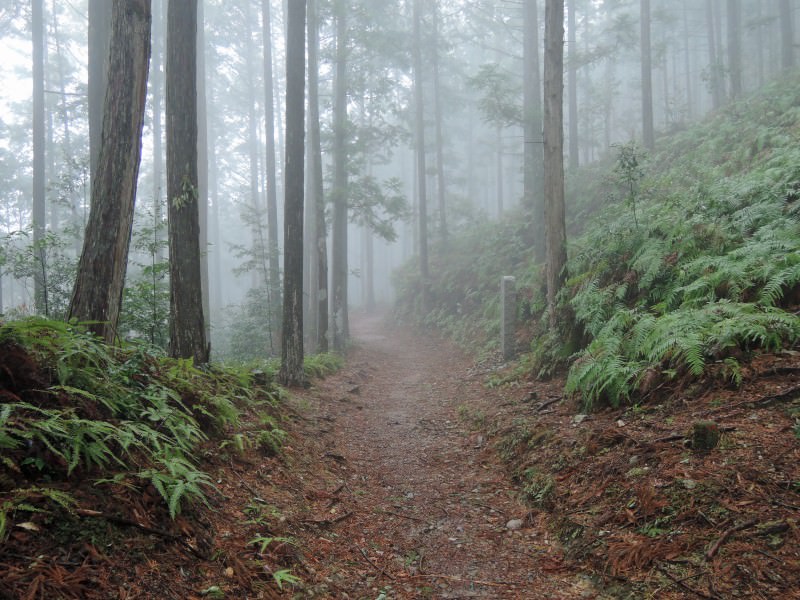
The Kumano Kodo is a large and complex subject, and could not be sufficiently discussed in one blog. So this is the first part of three blogs. I have found that few people, even people who are very familiar with Japan, know what the Kumano Kodo is. So this blog will define what the Kumano Kodo is. Part 2 will discuss the major trail routes that are part of the Kumano Kodo. And Part 3 will discuss the Kumano Sanzan.
The Kumano area is located in the southern tip of the Kii Peninsula, south of Osaka, Kyoto and Nara, and spans the current-day Wakayama and Mie prefectures. Kumano is an isolated sacred site and has long been considered the spiritual heart of Japan, and embodies the spiritual origins of Japan.

Kumano is centered around three shrines: Hongu Taisha, Nachi Taisha and Hayatama Taisha. Collectively, these three shrines are known as the Kumano Sanzan. For more than 1,000 years, Pilgrims have traveled to the Kumano Sanzan via a network of walking trails, collectively known as the Kumano Kodo.
The Kumano Sanzan are even older than the pilgrimage, and are mentioned in Japanese mythology. The heart of the Kumano pilgrimage was to worship at all three shrines of the Kumano Sanzan. The region is infused with religious and historical value that emanates from these three shrines. The Shinto sun goddess’ great grandson, Jimmu, came to Kumano to unify the country as Japan’s first emperor. Kumano is also often called “The Land of the Dead”, in reference to the belief that Shinto spirits and family ancestors dwell here after they die.

For over 1000 years people from all levels of society, including retired emperors and aristocrats, have made the arduous pilgrimage using the Kumano Kodo. The walk itself was an integral part of the pilgrimage process as they undertook rigorous religious rites of worship and purification along the way. Oji (subsidiary shrines of the Kumano deity) line the routes of the Kumano Kodo. These were important sites of religious rites and offerings and are still essential elements of the Kumano Pilgrimage. Today, walking the ancient Kumano Kodo is an excellent way to experience the unique cultural landscape of Kumano’s spiritual countryside.

In 2004, three sacred sites (Kumano Sanzan, Koyasan and Yoshino/Omine) and the pilgrimage routes that lead to and connect them, were registered on UNESCO’s World Heritage list as the “Sacred Sites and Pilgrimage Routes in the Kii Mountain Range”.
Kumano is blessed with a rich cultural and natural heritage, and is well known for its friendly locals, soothing hot springs and delicious cuisine. It is the perfect destination for visitors searching for an active,
off-the-beaten-path, immersive Japanese experience.





